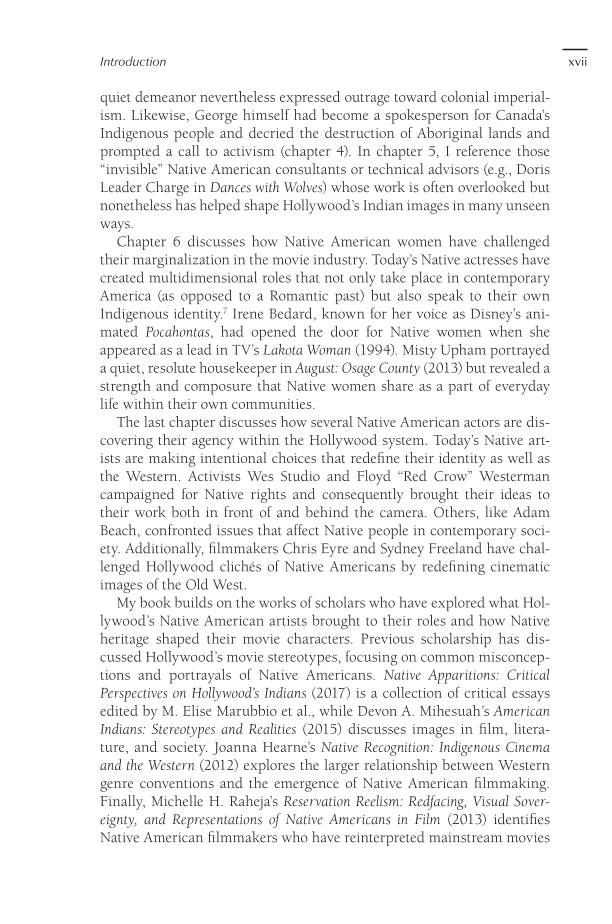Introduction xvii quiet demeanor nevertheless expressed outrage toward colonial imperial- ism. Likewise, George himself had become a spokesperson for Canada’s Indigenous people and decried the destruction of Aboriginal lands and prompted a call to activism (chapter 4). In chapter 5, I reference those “invisible” Native American consultants or technical advisors (e.g., Doris Leader Charge in Dances with Wolves) whose work is often overlooked but nonetheless has helped shape Hollywood’s Indian images in many unseen ways. Chapter 6 discusses how Native American women have challenged their marginalization in the movie industry. Today’s Native actresses have created multidimensional roles that not only take place in contemporary America (as opposed to a Romantic past) but also speak to their own Indigenous identity.7 Irene Bedard, known for her voice as Disney’s ani- mated Pocahontas, had opened the door for Native women when she appeared as a lead in TV’s Lakota Woman (1994). Misty Upham portrayed a quiet, resolute housekeeper in August: Osage County (2013) but revealed a strength and composure that Native women share as a part of everyday life within their own communities. The last chapter discusses how several Native American actors are dis- covering their agency within the Hollywood system. Today’s Native art- ists are making intentional choices that redefine their identity as well as the Western. Activists Wes Studio and Floyd “Red Crow” Westerman campaigned for Native rights and consequently brought their ideas to their work both in front of and behind the camera. Others, like Adam Beach, confronted issues that affect Native people in contemporary soci- ety. Additionally, filmmakers Chris Eyre and Sydney Freeland have chal- lenged Hollywood clichés of Native Americans by redefining cinematic images of the Old West. My book builds on the works of scholars who have explored what Hol- lywood’s Native American artists brought to their roles and how Native heritage shaped their movie characters. Previous scholarship has dis- cussed Hollywood’s movie stereotypes, focusing on common misconcep- tions and portrayals of Native Americans. Native Apparitions: Critical Perspectives on Hollywood’s Indians (2017) is a collection of critical essays edited by M. Elise Marubbio et al., while Devon A. Mihesuah’s American Indians: Stereotypes and Realities (2015) discusses images in film, litera- ture, and society. Joanna Hearne’s Native Recognition: Indigenous Cinema and the Western (2012) explores the larger relationship between Western genre conventions and the emergence of Native American filmmaking. Finally, Michelle H. Raheja’s Reservation Reelism: Redfacing, Visual Sover- eignty, and Representations of Native Americans in Film (2013) identifies Native American filmmakers who have reinterpreted mainstream movies
Document Details My Account Print multiple pages
Print
You have printed 0 times in the last 24 hours.
Your print count will reset on at .
You may print 0 more time(s) before then.
You may print a maximum of 0 pages at a time.











































































































































































































































